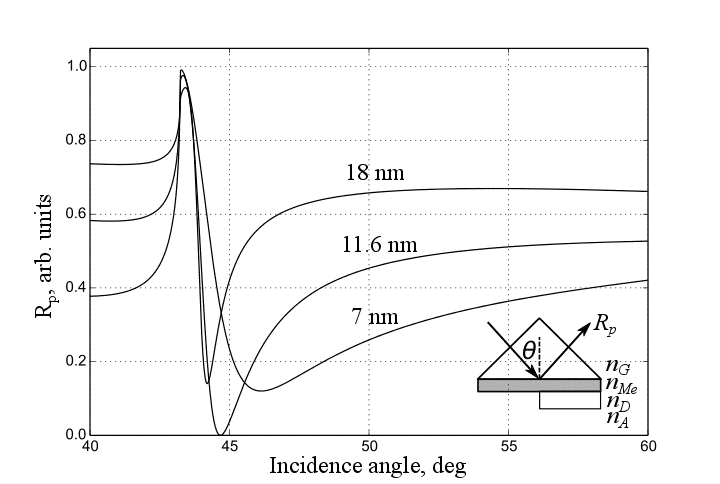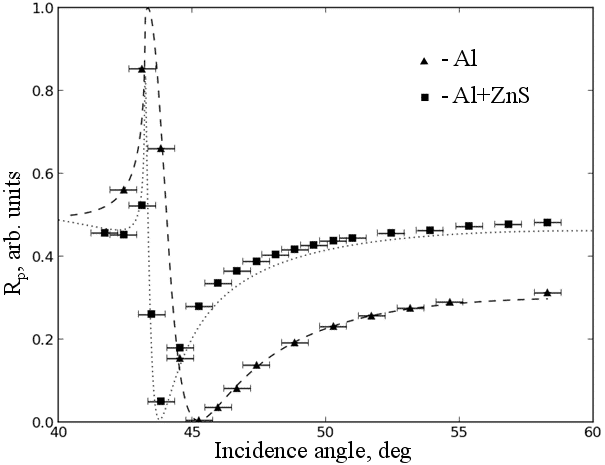
Synthesys of Metal-Dielectric Structure for Creating Optical Biosensors
Analysis of various metal-dielectric structures at angles of incidence greater than the critical angle is of the interest for biochemical environment sensors. Angular and spectral dependence of the reflection coefficient of the two structures - one with aluminum film and two-layer combination of the same film with a dielectric layer of zinc sulphide - are calculated and experimentally measured.
In reflected light at angles of incidence greater than the critical value, at the boundary of two dielectric media with a thin metal film between them, the frustrated total internal reflection appears at the resonant dependence of the reflection coefficient R with incident angle or wavelength. The appearance of the dips in the angular dependence of the reflectance of p-polarized light Rp is due to the excitation of surface plasmons [1]. Compact thin-layer sensor structures with a metal film are highly sensitive to refractive index changes in the analyzed liquids and gases [1-2].
The experimental scheme consists of a simple device - a prism with a thin metal film on the hypotenuse side, which is called a Kretchman configuration. It is interesting to analyze the R dependence transformation with various metal and dielectric layers combinations. Adding a dielectric layer enhances resonance effect. The first figure shows the calculated data for aluminum films with different thicknesses (7-18 nm). The optical constants for a massive aluminum (n = 0.9 - i6.21, λ = 532 nm), taken from the handbook, were used for modeling. It is clear, that minimum Rp shifts to lower angles with metal film thickness increasing. The second figure shows the experimental angular dependence of the pure aluminum film and the one with an added layer of ZnS. The figure shows that additional dielectric layer shifts the minimum Rp to smaller angles. Interesting results were obtained by measuring the spectral characteristics for the combination of Al + ZnS at different angles of incidence.


Our work is supported by the Russian Foundation for Basic Research (Grant No. 14-02-00248).
- Shalabney A., Abdulhalim I. Figure-of-merit enhancement of surface рlasmon resonance sensors in the spectral interrogation. Opt. Lett., 2012, 37 (7), 1175-1177.
- Goldina N.D.. Frustrated total internal reflection from thin-layer structures with a metal film. Optics and Spectroscopy, 2009, Vol. 106, No. 5, pp. 748–752.
ngold@laser.nsc.ru
Powered by Eventact EMS